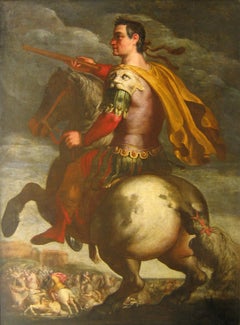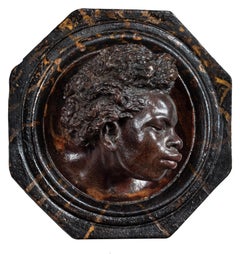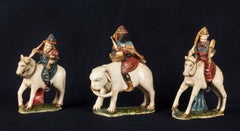All Items from this Seller (71)
16th Century Old Masters Paintings
Oil, Canvas
Late 18th Century Paintings
Canvas, Oil
17th Century Old Masters Paintings
Canvas, Oil
1670s Old Masters Paintings
Canvas, Oil
Early 1800s Figurative Sculptures
Terracotta
Late 18th Century Figurative Sculptures
Alabaster
18th Century Paintings
Canvas, Oil
Late 18th Century Paintings
Canvas, Oil
15th Century and Earlier Old Masters Paintings
Tempera, Panel
16th Century Old Masters Paintings
Oil, Panel
16th Century Old Masters Paintings
Oil, Panel
Late 19th Century Figurative Sculptures
Bronze
17th Century Baroque Drawings and Watercolor Paintings
Paper, Ink, Pen
Early 17th Century Baroque Drawings and Watercolor Paintings
Paper, Chalk
1840s Drawings and Watercolor Paintings
Paper, Ink, Pen
17th Century French School Drawings and Watercolor Paintings
Paper, Chalk
17th Century Old Masters Drawings and Watercolor Paintings
Paper, Chalk, Ink, Pen
18th Century Drawings and Watercolor Paintings
Paper, Chalk, Engraving
17th Century Old Masters Portrait Paintings
Terracotta, Gesso
1830s English School Paintings
Canvas, Oil
Early 20th Century Realist Drawings and Watercolor Paintings
Paper, Watercolor, Gouache, Pencil
1930s Realist Sculptures
Terracotta
16th Century Old Masters Paintings
Oil, Wood Panel
18th Century Old Masters Sculptures
Silver
17th Century Old Masters Paintings
Copper
1820s Old Masters Paintings
Canvas, Oil
16th Century Old Masters Paintings
Oil, Wood Panel
15th Century and Earlier Naturalistic Abstract Sculptures
Sandstone
15th Century and Earlier Naturalistic Abstract Sculptures
Sandstone
15th Century and Earlier Naturalistic Abstract Sculptures
Sandstone
1650s Old Masters Landscape Drawings and Watercolors
Paper, Chalk, India Ink, Watercolor
16th Century Old Masters Landscape Drawings and Watercolors
Paper, Ink, Pen
Late 19th Century Impressionist Nude Drawings and Watercolors
Charcoal, Board
17th Century Old Masters Figurative Drawings and Watercolors
Paper, Chalk, Ink, Pen
17th Century Old Masters Interior Drawings and Watercolors
Paper, Ink, Pen
16th Century Old Masters Figurative Drawings and Watercolors
Chalk, Ink, Pen, Paper
16th Century Old Masters Figurative Drawings and Watercolors
Paper, Ink, Pen
17th Century Old Masters Drawings and Watercolor Paintings
Canvas, Paper, Ink, Watercolor, Gouache, Pen
17th Century Renaissance Sculptures
Marble
1890s Romantic Figurative Paintings
Canvas, Paper, Oil
17th Century Old Masters Still-life Paintings
Canvas, Oil
15th Century and Earlier Renaissance Figurative Paintings
Oil, Wood Panel
20th Century Modern Figurative Drawings and Watercolors
Silk, Watercolor
20th Century Modern Figurative Drawings and Watercolors
Silk, Watercolor
15th Century and Earlier Old Masters Figurative Paintings
Tempera, Wood Panel
16th Century Baroque Figurative Drawings and Watercolors
Paper, Ink, Pen
17th Century Old Masters Animal Paintings
Canvas, Paper, Oil
19th Century More Art
Canvas, Paper, Ink, Pen
16th Century Renaissance Figurative Paintings
Canvas, Oil
16th Century Old Masters Figurative Drawings and Watercolors
Paper, Gouache
17th Century Baroque Portrait Drawings and Watercolors
Paper, Chalk
16th Century Old Masters Portrait Paintings
Oil, Panel
17th Century Old Masters Figurative Paintings
Canvas, Paper, Oil
17th Century Old Masters Paintings
Oil, Panel
17th Century Baroque Figurative Paintings
Canvas, Oil
19th Century Old Masters Landscape Paintings
Canvas, Oil
1810s Sculptures
Earthenware, Tin Glaze
18th Century Old Masters Portrait Drawings and Watercolors
Paper, Ink, Pen
18th Century Old Masters Figurative Paintings
Canvas, Oil
17th Century Old Masters Figurative Paintings
Canvas, Oil





